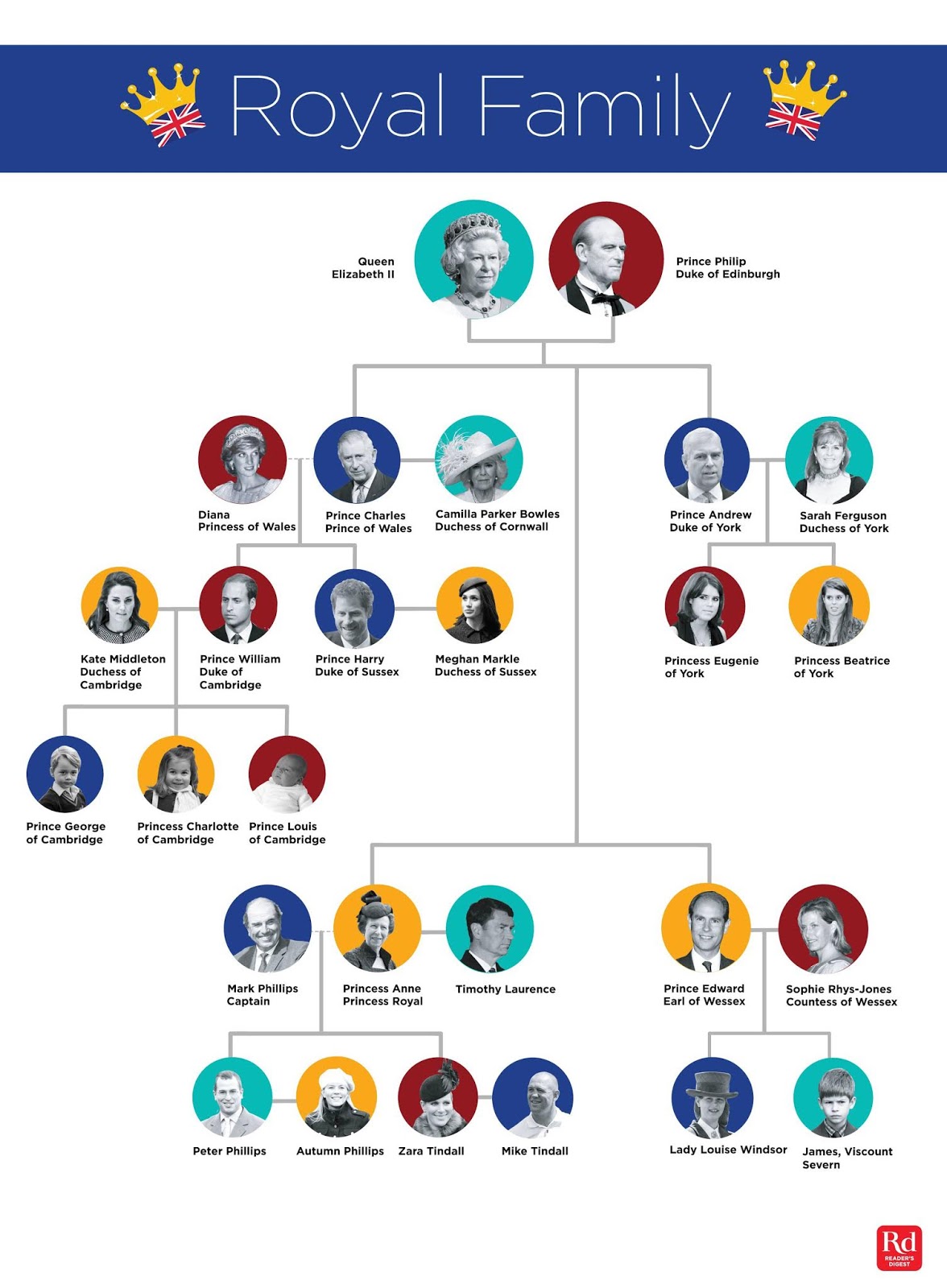The Curious Case of British Royal Family Last Names
The British Royal Family, steeped in tradition and ceremony, often seems to exist in a world apart. Their lives are a source of endless fascination, splashed across magazine covers and dissected in hushed tones. But have you ever stopped to wonder: What about their last names? It's a question that often sparks confusion, especially when you see different titles and styles used seemingly interchangeably.
The truth is, the subject of British royal family last names is more nuanced than you might expect. It's a story of evolving traditions, shifting power dynamics, and the enduring weight of history. Buckle up, because we're about to unravel the intriguing puzzle that is the British Royal Family and the curious case of their last names.
For centuries, British monarchs didn't actually use last names in the way we do today. Their names were often followed by "of" and a place name, signifying their rule or land ownership. Think Henry VIII, who was styled "Henry of England" or "Henry Tudor." This system, however, wasn't exactly stable. As dynasties rose and fell, so too did the family names associated with the throne.
It wasn't until 1917, under King George V, that things started to change. He decided to adopt "Windsor" as the official surname of his family. This decision was made amidst the backdrop of World War I, as anti-German sentiment was high, and the family’s previous surname, Saxe-Coburg and Gotha, had a distinctly German ring to it.
Today, the official surname for descendants of Queen Elizabeth II and Prince Philip is "Mountbatten-Windsor," a nod to Prince Philip's family name. However, it's important to note that members of the Royal Family often use their assigned titles, such as "Prince of Wales" or "Duke of Cambridge," instead of their last names in official capacities.
This practice can sometimes make it seem like they don't have last names at all, adding to the mystique that surrounds them. The use of titles instead of surnames is a reflection of their roles and positions within the monarchy, further separating them from the everyday lives of ordinary citizens.
So, the next time you find yourself pondering the complexities of British royal family last names, remember that it's a story woven from history, practicality, and a dash of royal prerogative. It's a reminder that even in a world of crowns and castles, names hold power and reflect the ever-evolving story of a family and a nation.
Now, you might be wondering: If Prince William were to, say, check into a hotel anonymously, what name would he use? Would it be "Mountbatten-Windsor"? Or perhaps he’d opt for something a bit less conspicuous. The reality is, we can only speculate. Like many things about the Royal Family, the true answer remains shrouded in a certain degree of secrecy and tradition. And perhaps, that's all part of the enduring allure.
Advantages and Disadvantages of Having a Royal Last Name
While we may never be royal, exploring the pros and cons of carrying a last name as weighty as "Mountbatten-Windsor" provides a glimpse into a world both privileged and strangely restrictive.
| Advantages | Disadvantages |
|---|---|
| Global Recognition and Respect | Intense Media Scrutiny and Limited Privacy |
| Access to Exclusive Opportunities and Resources | Constant Pressure to Uphold Public Image and Protocol |
| Platform for Social Impact and Change | Limited Freedom in Career and Personal Choices |
Common Questions About British Royal Family Last Names
Let's delve into some frequently asked questions that often pop up when discussing British royal family last names:
1. Why did the Royal Family change their name to Windsor?
The name change to Windsor in 1917 was largely due to anti-German sentiment during World War I. The previous name, Saxe-Coburg and Gotha, had strong German ties.
2. What is the Queen's last name?
While the official surname is Mountbatten-Windsor, Queen Elizabeth II, like previous monarchs, didn't typically use a last name. She was simply "Queen Elizabeth."
3. Do all members of the Royal Family use Mountbatten-Windsor?
While it's the official surname, many royals use their assigned titles instead. For instance, Prince William and Prince Harry used "Wales" as their last name while in school and the military.
4. What happens to last names when royals marry?
Traditionally, royal wives adopt their husband's last name or title. However, as seen with Princess Diana retaining "Diana, Princess of Wales" after her divorce, these customs are evolving.
5. Can the Royal Family choose to use a different last name?
Yes, they technically can. The monarch has the authority to change the family name, and individual members can choose to use different surnames in certain circumstances.
6. Why do royals sometimes have two last names?
Hyphenated last names, like Mountbatten-Windsor, reflect the lineage of both parents, acknowledging both sides of the family tree.
7. Will the Royal Family's last name change again?
It's possible, though unlikely in the immediate future. Changes in surname are often tied to significant historical events or shifts in royal protocol.
8. What can we learn from the history of royal last names?
The evolution of British royal family last names highlights the intertwining of personal identities, political considerations, and the enduring legacy of monarchy.
In the grand tapestry of the British monarchy, last names might seem like a minor detail. Yet, they offer a fascinating glimpse into the complex interplay of tradition, power, and personal identity. From the weight of history to the ever-evolving present, the story of British royal family last names is a reminder that even within the most established institutions, change is a constant. It leaves us with a sense of wonder, a thirst for more knowledge, and perhaps, a renewed appreciation for the simple yet profound significance of names.
Mastering the art of the unpaid leave a guide to freedom
Fix that carpet seam a simple guide to seamless repairs
Freaky descriptive texts to send














